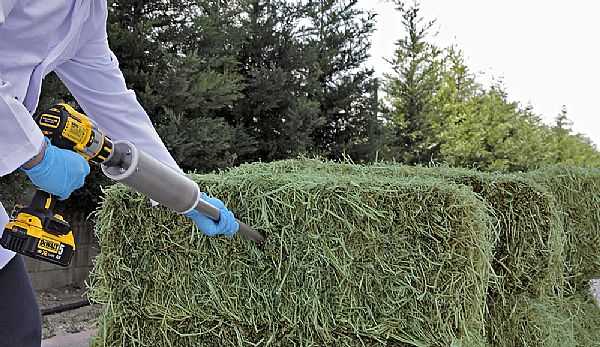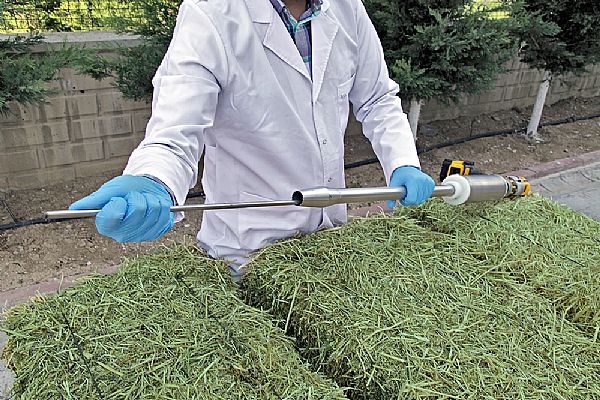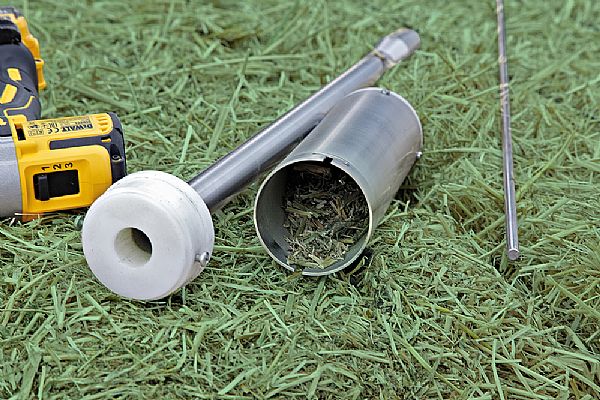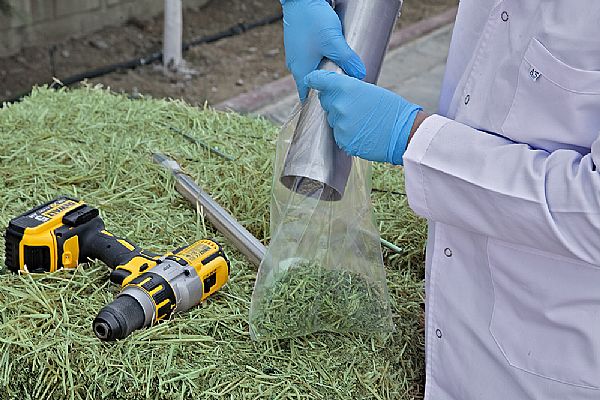FEED ANALYSIS SERVICES
FEED ANALYSIS SERVICES: Feed cost constitutes a large part of the product cost, such as 70-80%, in livestock enterprises. The way to reduce these costs is to give animals a balanced ration with minimum feed waste. A balanced ration is one that meets the needs that vary according to the physiological state of the animal and the targeted production performance. Accurate and reliable analyzes have an important place among the requirements to ensure this. Analysis of feed values in both poultry and ruminant feeding provides cost and raw material savings. As a result of the analysis, the quality of the feeds produced with the rations prepared increases, resulting in an increase in yield performance and a decrease in production costs. While feeding is done with a single type of feed in poultry feeding, ruminant feeding is fed with a mixture of both grain feeds and roughage. The use of roughage in the nutrition of ruminant animals is a necessity both in terms of the digestive physiology of the animal and in terms of cost economy. Knowing the qualities of the roughage to be given to the animals is important in terms of knowing which roughage is more suitable for the animal in which physiological stage and pricing the roughage. Changes in the quality of the roughage; It has been determined that it is effective on feeding cost, lactation performance, meat holding ability and animal health. Continuous forage and TMR analyzes and quality controls will allow you to know how you feed your animals.
ANALYSIS PARAMETERS
1. Dry Matter; Calculate the amount remaining in the sample, excluding the water it contains. It is the most basic value for rations made on the basis of KM, especially in ruminant feeding.
2. Raw Ash; It is the expression of the amount of ash formed from inorganic substances in a feed material as %. The amount of raw ash in the feed gives information about the mineral content of the feed.
3. Acid Insoluble Ash; Foreign materials such as dust, soil and gravel particles mixed with a feed are also evaluated in the raw ash. However, it is the analysis parameter used to determine such impurities.
4. Crude Protein; It is an indicator of the total protein content of a feed substance. Protein is the sum of substances such as amides, acid amides, free amino acids, simple peptides, nitrogenous glycosides, amines, nucleic acids, betaine, xanthine.
5. Crude Oil; It is an indicator of the total amount of fat contained in a feed substance. It is the sum of substances such as triglycerides, phosphatids, cerebrosides, sterins, etheric oils, coloring agents (chlorophyll, xanthophyll, carotene), fat-soluble vitamins.
6. Crude Cellulose; It is an indicator of the total cellulose content of a feed substance. It also includes cellulose, hemicellulose, lignin
7. Sugar; It is a parameter that affects the energy value especially in monogastric feeds.
8. Starch; Dietary cellulose (roughage) digestion is reduced in feeds with high starch content. For this reason, it is an analysis parameter that should be measured in order not to experience negative effects in yields and rations.
9. NDF; NDF, which forms the plant structure and cell wall material of the feed, consists of hemicellulose, cellulose, lignin and nitrogen and acid-insoluble ash attached to the cell wall. They are insoluble in neutral detergent solution. Hemicellulose and cell wall nitrogen dissolve in NDF solution. The structures that make up NDF cannot be broken down by ruminant digestive enzymes (intestinal enzymes). Therefore, structural carbohydrates are subjected to microbial fermentation by microorganisms (protozoa, fungi and bacteria) in their rumen, thanks to their unique stomach structures, before being enzymatically digested by ruminants. NDF is always needed to maximize productivity and maintain herd health in ruminants. The rations of ruminants should consist of roughage with optimum NDF content with sufficient particle size for optimum chewing activity, rumen fermentation, milk fat percentage and good dry matter consumption. It is the analysis parameter to get an idea about all these issues.
10. ADF; It is obtained by subtracting the hemi-cellulose content from the NDF (neutral detergent-insoluble fiber) content of the ground and dried feed material. It gives an idea about the quality of the feed. The digestibility and energy value of feeds with high ADF content are low.
11. ADL; It is a compound that affects the ability of animals to digest grass. The lignin content of the plant increases as the plant matures. For this reason, it is important in terms of nutrition that the digestibility of the plant increases with the age of the plant. It is the analysis parameter made to get an idea about this issue in the plant.
12. Calcium; It is the most abundant essential macro mineral in the body of all animals. In its insufficiency, growth stops, bone and skeleton weakness, milk and egg production decrease, milk fever, tetany, maternal difficult births are caused. It is the analysis parameter to measure the level of this mineral.
13. Total Phosphorus; It is an essential macro mineral like calcium. In its deficiency, it causes animals with appetite disorders, called pica, to eat inedible foreign materials such as wood and fabric pieces, reproductive disorders, heat cycle disorders and low productivity. It is an analysis parameter to measure the level of this mineral.
14. Salt; It is important both as an appetizer and as a mineral nutrient and is needed by all animals. Especially grass-eating animals need more salt. In its deficiency, decrease in appetite, loss of live weight, decrease in milk yield and dullness in the eye occur. It is the analysis parameter to measure the level of this mineral.
15. Urea; It is the analysis parameter for the determination of the added urea in order to show the crude protein content in raw materials that are protein sources.
16. Urease Activity; Soy and its products, which are one of the most widely used protein sources in poultry nutrition, contain Trypsin Inhibitor, a substance that reduces the activities of enzymes that help in protein digestion. This substance loses its activity with cooking and loses its effect. For this reason, soybean used in poultry nutrition needs to be cooked and/or roasted. Urease activity analysis is performed as a measure of whether a soy or soy product is cooked sufficiently. In addition to the above analyzes, NDICP (protein insoluble in neutral detergent solution), ADICP (protein insoluble in acid detergent solution), real protein and protein insoluble in BP are also analyzed. The results of these analyzes and other parameters used in ration preparation can also be found by calculation methods. These are: N Fraction A, % HP, N Fraction B, % HP, N Fraction C, % HP, RUP, %HP, 2% (ByPass Protein), RUP, %HP, 4% (ByPass Protein), RUP Digestibility % , ME, Mcal / Kg (TSE), TSBM %, SE-1X, Mcal/Kg, ME-3X, Mcal/Kg, NEL-3X, Mcal/Kg, NEL-4X, Mcal/Kg, NEM-3X, Mcal /Kg,NEG-3X, Mcal/Kg





